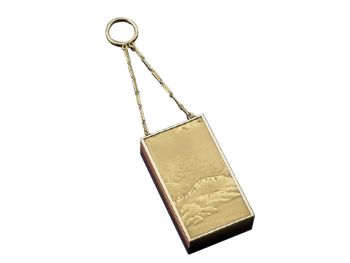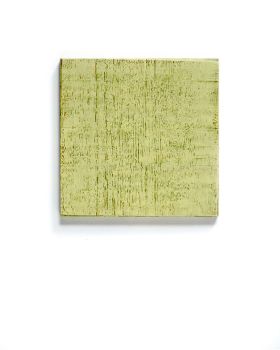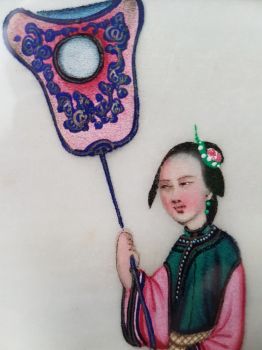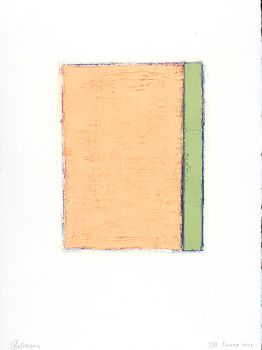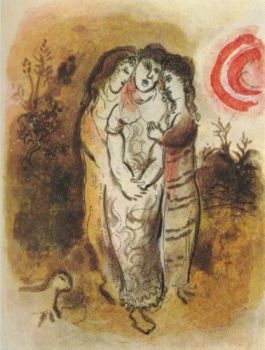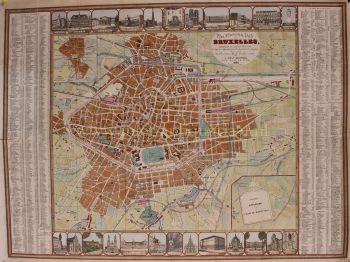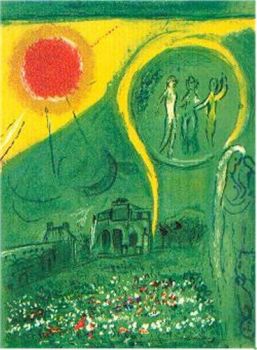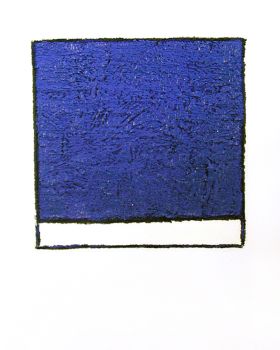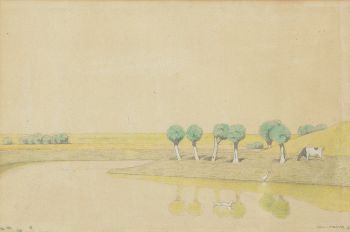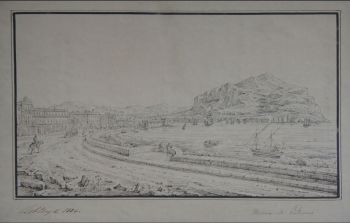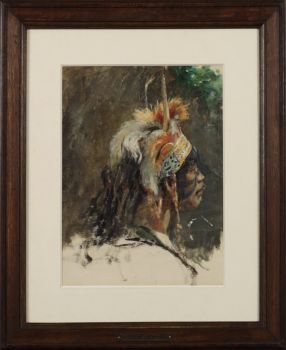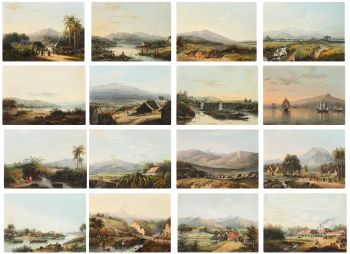LIVRE ENGELBERT KAEMPFER 1651 - 1716
Engelbert Kaempfer
Papier
ConditionRestored
Prix sur demande
Zebregs & Röell - Fine Art - Antiques
- Sur l'oeuvre d'artDe Beschryving van Japan, behelsende een verhaal van den oude en tegenwoordigen Staat en Regering van dat Rijk, ...... benevens eene Beschrijving van het Koningryk Siam ........Uyt het Engelsch in ‘t Nederlands vertaalt. Published in 1729 by P. Gosse and J. Neaulme, ‘s Gravenhage, and Balthasar Lakeman, Amsterdam.
First Dutch edition with numerous copper plates showing the geography, architecture, flora, fauna, the Dutch court journey, Japanese script, Gods, etc.
In a modern slip-case. Original marbled cover, spine replaced. With some restorations.
Note:
Engelbert Kaempfer, born in Germany, was a physician, medical doctor, naturalist and world traveller. In 1683 he departed on a trip via Moscow to the court of the Shah of Persia in the company of a Swedish delegation. There he joined the VOC as ship’s doctor, and by way of India went to Batavia, the VOC headquarters in Asia. In Batavia he studied all available sources of Japan he could lay hands-on, and in 1690 got his chance to go to Japan where he stayed till November 1692 in the Dutch trade-post on the small island of Deshima in the harbour of Nagasaki. During his stay in Japan, he twice accompanied the “Opperhoofd”, head of the trading post, on his court journey to the Shogun in Edo (Tokyo). On these trips, he observed and made notes on the history, society, politics and religion, as well as flora and fauna of Japan, and he also made many sketches for the illustrations in his books. Thanks to his training in many topics such as mathematics, astronomy, natural science and medicine, Kaempfer was the first Western person with a scientific approach to countries in Asia, which were so different from Europe. Gifted with excellent observational capacities, he recorded everything he saw in great detail in writing and drawing. His descriptions of the audiences with the Shogun also clearly show the enormous hunger of the Japanese for information about Holland and the Western world. The Shogunate at that time was bent on not allowing any geographical information on Japan to go out of the country. By adding descriptions in Arabic to his drawings, Kaempfer got away with it.
After his return to Holland in 1693 Kaempfer first wrote his thesis and received his doctorate from the University of Leiden in 1694. After that, he returned to his native Germany where he was employed as a medical doctor and devoted much of his time to writing his book “Das Heutige Japan”. He was unable to find a publisher, and after his death in 1716, all the material he had collected and his manuscript went to his nephew who due to financial problems sold everything and subsequently it was acquired by the collector and physician Sir Hans Sloane, who asked his young Swiss librarian Johan Caspar Scheuchzer to translate the German manuscript into English. Scheuchzer, not being a native English speaker and not being very sympathetic towards Kaempfer’s positive attitude towards Japanese social and heretic religious systems, made various changes and eliminations to the original manuscript. The present Dutch translation was based on Scheuchzer’s English edition.
Nevertheless, upon its first publication in 1727 “The History of Japan” was an immediate success and with its 12 editions in a short time and the translation into French and Dutch, must be considered an absolute best-seller.
- Sur l'artiste
Engelbert Kaempfer (16 septembre 1651 - 2 novembre 1716) était un naturaliste, médecin, explorateur et écrivain allemand connu pour sa tournée en Russie, en Perse, en Inde, en Asie du Sud-Est et au Japon entre 1683 et 1693.
Il a écrit deux livres sur ses voyages. Amoenitatum exotiquearum, publié en 1712, est important pour ses observations médicales et la première description détaillée des plantes japonaises (Flora Japonica). Son Histoire du Japon, publiée à titre posthume en 1727, a été la principale source de connaissances occidentales sur le pays tout au long des XVIIIe et milieu du XIXe siècles, lorsqu'il était fermé aux étrangers.
Êtes-vous intéressé par l'achat de cette oeuvre?
Artwork details
Related artworks
Antonie Derkinderen
Memory book Exhibition of Dutch Painting1892
Prix sur demandeKunsthandel Pygmalion
Tilmanus Nicolaus Maastricht
Missale Romanum avec montures en argent hollandais1788 - 1792
Prix sur demandeJacob J. Roosjen SRI
Yoko Ono
YOKO ONO: "ARISING" SIGNED BOOK PLUS SMALL ARTWORK 2010 - 2014
Prix sur demandeGallerease Selected
Tilmanus Nicolaus Maastricht
Missale Romanum avec montures en argent hollandais1788 - 1792
Prix sur demandeJacob J. Roosjen SRI
LAWRENCE WEINER
"SKIMMING THE WATER [MENAGE A QUATRE]" Signed book plus small artwork2010 - 2014
Prix sur demandeGallerease Selected
Hermann Nitsch
"UNDER MY SKIN" Signed book incl. small artwork and DVD in a matching box2010 - 2014
Prix sur demandeGallerease Selected
Antonie Derkinderen
Memory book Exhibition of Dutch Painting1892
Prix sur demandeKunsthandel Pygmalion
1 - 4 / 21Artiste Inconnu
A large Japanese Imari porcelain 'VOC Groningen' dish1800 - 1925
Prix sur demandeZebregs & Röell - Fine Art - Antiques
Artiste Inconnu
UN RARE GRAND TÉLESCOPE EN CUIR LAQUÉ JAPONAIS1750 - 1800
Prix sur demandeZebregs & Röell - Fine Art - Antiques
1 - 4 / 24- 1 - 4 / 24
Artiste Inconnu
The bell of the VOC fortress in Jaffna, Sri Lanka1747
Prix sur demandeZebregs & Röell - Fine Art - Antiques
 Sélectionné par
Sélectionné parDanny Bree
Artiste Inconnu
A Surinam-themed Amsterdam long-case clock1746 - 1756
Prix sur demandeZebregs & Röell - Fine Art - Antiques
 Sélectionné par
Sélectionné parGallerease Magazine
 Sélectionné par
Sélectionné parDanny Bree
Abraham Salm
Twenty-four chromolithographs of Java after A. Salm”1801 - 1876
Prix sur demandeZebregs & Röell - Fine Art - Antiques
Artiste Inconnu
UN FILET D'IVOIRE D'UN DUTCHMAN TENANT UN COCKEREL18th century
Prix sur demandeZebregs & Röell - Fine Art - Antiques
1 - 4 / 12


















!["SKIMMING THE WATER [MENAGE A QUATRE]" Signed book plus small artwork by LAWRENCE WEINER](https://media-2.gallerease.com/images/442bfd5f-fc31-4e18-a2fa-ee0c08eade64/350x350/skimming-the-water-menage-a-quatre-signed-book-plus-small-artwork.jpg)




























